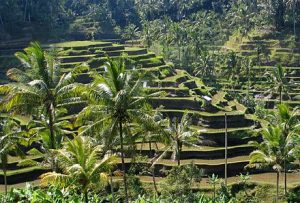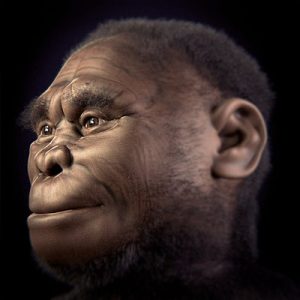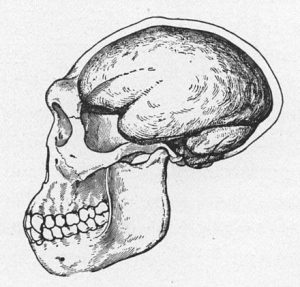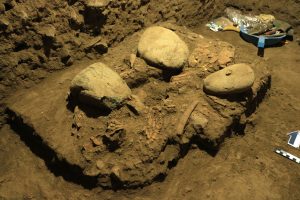Pre-historic Indonesia - 1.800.000 - 40.000 BC
- Homo Erectus arrives in Indonesia
- Homo Sapiens arrives in Indonesia
- First people arrived when sea level was lower
Pre-Civilization - < 2.500 BC
- Inhabitants learn to farm taro, millet, rice, bananas etc
- Ik krijg neik Bronze and iron first used
Trade established with China and India
Dawn of Civilization - 1.000 BC - 2 AD
- Austronesians come from Phillipines to Indonesia
Small towns and villages form - wet rice cultivation introduced and villages were forced to co-operate to regulate the supply of water to their fields
In 2007, an analysis of cut marks on two bovid bones found in Sangiran, showed them to have been made 1.5 to 1.6 million years ago by clamshell tools. This is the oldest evidence for the presence of early humans in Indonesia. Fossilised remains of Homo erectus in Indonesia, popularly known as the “Java Man” were first discovered by the Dutch anatomist Eugène Dubois at Trinil in 1891, and are at least 700,000 years old. Other H. erectus fossils of a similar age were found at Sangiran in the 1930s by the anthropologist Gustav Heinrich Ralph von Koenigswald, who in the same time period also uncovered fossils at Ngandong alongside more advanced tools, re-dated in 2011 to between 550,000 and 143,000 years old. In 1977 another H. erectus skull was discovered at Sambungmacan.[5] The earliest evidence of artistic activity ever found, in the form of diagonal etchings made with the use of a shark’s tooth, was detected in 2014 on a 500,000-year-old fossil of a clam found in Java in the 1890s, associated with H. erectus.[6]
In 2003, on the island of Flores, fossils of a new small hominid dated between 74,000 and 13,000 years old were discovered, much to the surprise of the scientific community. This newly discovered hominid was named the “Flores Man”, or Homo florensis.[7][8] This 3 foot tall hominid is thought to be a species descended from Homo erectus that reduced in size over thousands of years, through a well-known process called island dwarfism. Flores Man seems to have shared the island with modern Homo sapiens until only 12,000 years ago, when they became extinct. In 2010, stone tools were discovered on Flores, dating from 1 million years ago. These are the earliest remains implying human seafaring technology.

Megalithic statue found in Tegurwangi, Sumatra, Indonesia 1500 CE
The Indonesian archipelago was formed during the thaw after the Last Glacial Maximum. Early humans travelled by sea and spread from mainland Asia eastward to New Guinea and Australia. Homo sapiens reached the region by around 45,000 years ago.In 2011, evidence was uncovered in neighbouring East Timor, showing that 42,000 years ago, these early settlers had high-level maritime skills, and by implication the technology needed to make ocean crossings to reach Australia and other islands, as they were catching and consuming large numbers of big deep sea fish such as tuna.
Austronesian people form the majority of the modern population. They may have arrived in Indonesia around 2000 BCE and are thought to have originated in Taiwan. During this period, parts of Indonesia participated in the Maritime Jade Road, which existed for 3,000 years between 2000 BC to 1000 AD. Dong Son culture spread to Indonesia bringing with it techniques of wet-field rice cultivation, ritual buffalo sacrifice, bronze casting, megalithic practises, and ikat weaving methods. Some of these practices remain in areas including the Batak areas of Sumatra, Toraja in Sulawesi, and several islands in Nusa Tenggara. Early Indonesians were animists who honoured the spirits of the dead believing their souls or life force could still help the living.

Example of Rice Terraces in Indonesia.
Ideal agricultural conditions, and the mastering of wet-field rice cultivation as early as the 8th century BCE,[17] allowed villages, towns, and small kingdoms to flourish by the 1st century CE. These kingdoms (little more than collections of villages subservient to petty chieftains) evolved with their own ethnic and tribal religions. Java’s hot and even temperature, abundant rain and volcanic soil, was perfect for wet rice cultivation. Such agriculture required a well-organized society, in contrast to the society based on dry-field rice, which is a much simpler form of cultivation that does not require an elaborate social structure to support it.
Buni culture clay pottery flourished in coastal northern West Java and Banten around 400 BCE to 100 CE. The Buni culture was probably the predecessor of the Tarumanagara kingdom, one of the earliest Hindu kingdoms in Indonesia, producing numerous inscriptions and marking the beginning of the historical period in Java.
In 11 December 2019, a team of researchers led by Dr. Maxime Aubert announced the discovery of the oldest hunting scenes in prehistoric art in the world which is more than 44,000 years old from the limestone cave of Leang Bulu’ Sipong 4. Archaeologists determined the age of the depiction of hunting a pig and buffalo thanks to the calcite ‘popcorn’, different isotope levels of radioactive uranium and thorium.

Earliest Indonesia
Earliest Historical Records The Indonesian archipelago stretches for more than 3,000 miles east to west and is the largest island complex in the world. The

Homo Floresiensis
Homo Floresiensis, The Hobbit. Homo floresiensis (“Flores Man”; nicknamed “Hobbit”) is a species of small archaic human that inhabited the island of Flores, Indonesia, until

Java Man
Java Man The Missing Link Java Man (Homo erectus erectus, formerly also Anthropopithecus erectus, Pithecanthropus erectus) is an early human fossil discovered in 1891 and

Meet Bessé, Holocene hunter-gatherer
7.200 year old pre-Neolithican skeleton found in Sulawesi Archeologists found a 7.200 year old skeleton of a woman buried in a cave in South Sulawesi.The
